10Jul
Choosing the Right RF Filter for Your Application
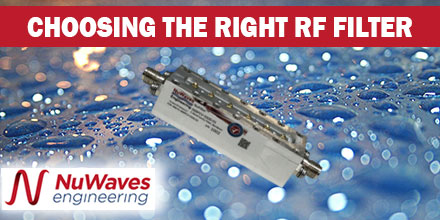 Choosing the right RF Filter for your application can feel like a daunting task. After all, there are numerous options available.
As such, when choosing an RF filter for your communications system, test and measurement setup, or RF module design, the best option depends on your specific application.
Below are some key parameters to help guide your decision:
Choosing the right RF Filter for your application can feel like a daunting task. After all, there are numerous options available.
As such, when choosing an RF filter for your communications system, test and measurement setup, or RF module design, the best option depends on your specific application.
Below are some key parameters to help guide your decision:
- The frequency range(s) that shall pass through the filter (i.e., the passband)
- The frequency range(s) that shall be rejected by the filter (i.e., the stopband)
- The signal power level that will pass through, or be rejected by the filter
- The amount of attenuation allowable in the passband (i.e., insertion loss (IL))
- The amount of rejection required in the stopband(s)
- The limitations on the physical size of the filter
- The cost target for the filter
Cavity filters
Cavity filters provide the lowest insertion loss and greatest ultimate rejection of the three topologies and are capable of handling high levels of RF power (tens of watts to hundreds of watts). At radio frequencies, the materials used in filter construction impact the performance of the filter. Printed circuit board (PCB) materials have dielectric losses that increase the insertion loss of the filter and reduces the Q-factor of the filter (how sharply the filter transitions from the passband to the stopband). For cavity filters, the dielectric is air, which is essentially lossless. Additionally, cavity filters are constructed from metals such as steel, aluminum, or brass, which shield the signal within the filter from other signals and interference from the outside. This provides a high amount of ultimate attenuation. The cost of a cavity filter, in general, is higher than that of other topologies. These filters are typically CNC machined, and require a skilled technician to properly tune the filter during assembly. See Table 1 below for the advantages and disadvantages of each topology.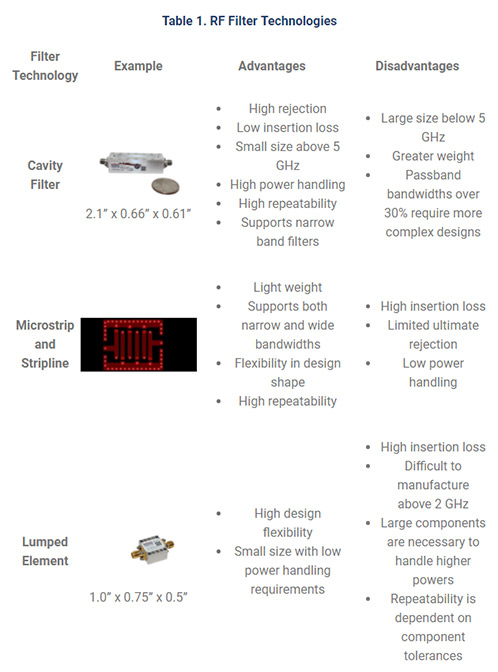

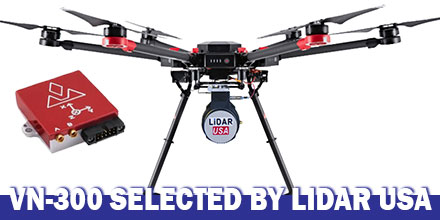 LiDAR USA announced the integration of VectorNav's VN-300 Dual-Antenna Inertial Navigation System f0r its ScanLook Revolution UAV-based mapping-system.
The combined system provides LiDAR mapping capabilities targeted at applications that require a fast, efficient and easy-to-use solution.
LiDAR USA announced the integration of VectorNav's VN-300 Dual-Antenna Inertial Navigation System f0r its ScanLook Revolution UAV-based mapping-system.
The combined system provides LiDAR mapping capabilities targeted at applications that require a fast, efficient and easy-to-use solution.
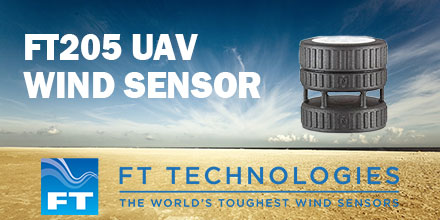 FT Technologies announced the launch of the first in a new generation of lightweight ultrasonic wind sensors -- the FT205.
Made from a graphite and nylon composite, and weighing only 100g (3.5oz), the FT205 is designed specifically for use on drones and unmanned aerial vehicles (UAVs).
FT Technologies announced the launch of the first in a new generation of lightweight ultrasonic wind sensors -- the FT205.
Made from a graphite and nylon composite, and weighing only 100g (3.5oz), the FT205 is designed specifically for use on drones and unmanned aerial vehicles (UAVs).
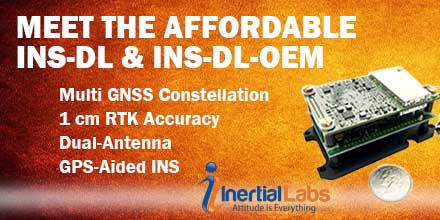 Inertial Labs, Inc., a developer and supplier of high performance Inertial Sensors and Systems, released an affordable, multi GNSS constellation, 1 cm RTK accuracy dual-antenna GPS-Aided Inertial Navigation System (INS).
Inertial Labs, Inc., a developer and supplier of high performance Inertial Sensors and Systems, released an affordable, multi GNSS constellation, 1 cm RTK accuracy dual-antenna GPS-Aided Inertial Navigation System (INS).
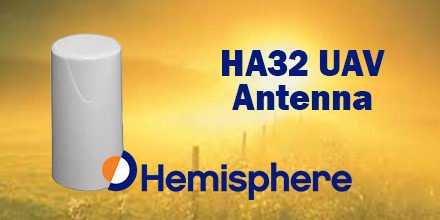 Hemisphere GNSS recently announced the launch of its all-new multi-GNSS, multi-frequency 4-helix HA32 UAV antenna.
The HA32 is a high-performance antenna. It supports GPS, GLONASS, Galileo, BeiDou, and Hemisphere's Atlas L-band correction service.
Designed specifically for UAVs, GIS, surveying, and RTK. It is also highly suitable for applications requiring high-precision positioning and navigation.
Hemisphere GNSS recently announced the launch of its all-new multi-GNSS, multi-frequency 4-helix HA32 UAV antenna.
The HA32 is a high-performance antenna. It supports GPS, GLONASS, Galileo, BeiDou, and Hemisphere's Atlas L-band correction service.
Designed specifically for UAVs, GIS, surveying, and RTK. It is also highly suitable for applications requiring high-precision positioning and navigation.
 GNSS receiver manufacturer Septentrio recently announced the launch of the next generation AsteRx-i. The announcement occurred at IEEE/ION Position Location and Navigation Symposium in Monterey, US.
The AsteRx-i combines Septentrio’s latest compact, multi-frequency multi-constellation GNSS engine with an external industrial grade MEMS based IMU.
It delivers accurate and reliable GNSS/IMU integrated positioning to the cm-level. It also delivers full 3D attitude at high update rates and low latency.
GNSS receiver manufacturer Septentrio recently announced the launch of the next generation AsteRx-i. The announcement occurred at IEEE/ION Position Location and Navigation Symposium in Monterey, US.
The AsteRx-i combines Septentrio’s latest compact, multi-frequency multi-constellation GNSS engine with an external industrial grade MEMS based IMU.
It delivers accurate and reliable GNSS/IMU integrated positioning to the cm-level. It also delivers full 3D attitude at high update rates and low latency.
